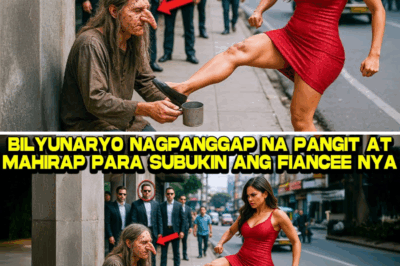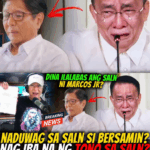The nation’s campaign against corruption has entered a new, uncompromising era, spearheaded by the Office of the Ombudsman. This shift is defined by aggressive internal reforms, sophisticated international collaborations, and a stringent new evidence threshold designed to counteract the slow, systemic rot that has plagued high-profile cases for decades. Most dramatically, the Office has delivered a stark ultimatum to key players in the notorious flood control anomaly, signaling an end to political bargaining and a commitment to prosecution.
The core of the recent development centers on the Discaya couple, who were once considered essential witnesses in exposing the massive infrastructure scam. Due to their persistent refusal to cooperate fully, the Ombudsman has declared them “hostile witnesses,” effectively stripping them of any chance of becoming state witnesses and guaranteeing their future prosecution. This decision marks a significant turn in the investigation, demonstrating the Ombudsman’s resolve to pursue justice with or without the cooperation of reluctant insiders.

The status of the Discayas—implicated in over 4,000 bids nationwide and believed to be involved in “every scheme or scam” identified within the Department of Public Works and Highways (DPWH)—was definitively addressed. Due to their “uncooperative behavior,” the Ombudsman asserts they have “absolutely no chance” of securing state witness status.
The consequence is severe: The Discayas will be charged as respondents and subsequently accused in cases concerning malversation of public funds, falsification of public documents, and other related crimes.
The Ombudsman views their refusal to cooperate not as a sign of innocence, but as a misguided bargaining strategy. However, the office stressed that the government already possesses sufficient evidence to proceed, and the Discayas are in no position to dictate terms. The statements and affidavits they provided to the Senate are deemed “lacking” in specific acts and supporting evidence—a calculated move on their part to avoid being “nailed down,” which has now backfired entirely. Their protected witness status will be removed by the Department of Justice (DOJ), clearing the path for their prosecution.
The uncompromising stance on the Discayas is mirrored by sweeping internal reforms aimed at modernizing the office’s capacity to fight complex graft cases.
The Ombudsman announced a significant collaboration with the United Nations Office on Drugs and Crime (UNODC), focusing on capacity building in three critical areas: digital forensics, beneficial ownership structure analysis, and asset freezing. This partnership is intended to provide the agency with the tools necessary to trace illicit funds and pierce the veil of corporate secrecy. The office also intends to leverage this collaboration to directly request the Anti-Money Laundering Council (AMLC) to freeze accounts related to the flood control issue, following the money trail with unprecedented speed.
Domestically, the office is launching a comprehensive digitalization effort. A consultant has been engaged to mesh four existing internal systems to ensure cohesive case management and record access. The ultimate goal is to streamline operations and integrate Artificial Intelligence (AI) into ministerial tasks at the evaluation stage. AI will be used to efficiently check for related cases and the completeness of supporting documents, aiming for earlier case resolutions and minimizing unnecessary delays.
One of the greatest systemic threats to the anti-corruption drive is the issue of “inordinate delay,” a procedural hurdle that often sees guilty parties walk free. The Ombudsman held a crucial meeting with Justice Geraldina Econg, the Presiding Justice of the Sandiganbayan, to address this crisis.
The magnitude of the problem is alarming: almost half of all cases filed in the Sandiganbayan are reportedly dismissed not on their merit, but due to these procedural delays. The Ombudsman plans to hold a broader meeting with all Sandiganbayan justices to find systemic solutions to this issue, acknowledging that their role is to recommend prosecution, becoming a party only once the case is officially filed in the anti-graft court.
Complementing this effort is a review of internal policies designed to prevent unnecessary drag on cases. The office is investigating a 2016 motion for reconsideration that took a shocking three years to resolve. Furthermore, a crucial reform is being discussed to remove the Motion for Reconsideration (MR) as a prerequisite for appealing a lost case to the Supreme Court. This is intended to expedite resolutions, align the Ombudsman’s policy with the DOJ, and prevent sophisticated legal maneuvers from using procedural steps to create delay.
To ensure that cases filed against high-profile officials are ironclad and withstand the scrutiny of the Sandiganbayan, the Ombudsman has adopted a stringent new standard: requiring a “prima facie case with reasonable certainty of conviction.” This means the days of relying solely on the word of a single witness are over.
Testimonial evidence, even from cooperating witnesses like Bryce Hernandez (who provided a ledger of Bulacan project proponents), is deemed insufficient without robust corroboration.
The necessary evidence threshold now demands a comprehensive, layered approach:
Financial Tracing: Bank records tracing progress billings and checks to personal or dummy accounts.
Physical Evidence: Testimonies and affidavits from field engineers or local residents confirming that no actual work was done (ghost projects).
Documentation: Comprehensive COA fraud audit reports and forensic audits proving fabricated liquidation documents.
Hard Proof: Photos, videos, recordings, or screenshots to support testimonial accounts and mitigate the risk of witnesses later recanting their statements.
This strategic shift recognizes that high-profile respondents can easily mount a strong defense. The Ombudsman’s office must present an unassailable case from the outset, focusing on malversation, plunder, Anti-Graft, and Procurement Act violations.
The spirit of reform extends to the integrity of the office itself. The Ombudsman ordered courtesy resignations from individuals recently appointed or promoted at the end of the previous administration’s term. This is not seen as a retaliatory measure, but a direct call for loyalty to the office rather than any individual who previously held the helm. Many have complied, showing “good faith,” though the Ombudsman acknowledged some resistance. The ultimatum is firm: “if there’s nothing to hide, there’s nothing to worry about.”
In a move toward greater transparency, the office has also circulated new guidelines for the release of Statements of Assets, Liabilities, and Net Worth (SALNs). The policy, effective after 15 days of publication, generally grants all requests, reserving exceptions only for justifiable grounds such as preventing the use of SALNs for threats, intimidation, or by individuals with a documented history of misuse. The Ombudsman urged all government agencies to adopt this new policy of openness.
The Office of the Ombudsman, under its new leadership, is clearly signaling a transformation—a commitment to fight corruption not just with political will, but with superior technology, streamlined procedures, and uncompromised standards of evidence, ensuring that justice is delivered effectively and without “inordinate delay.”
News
Ang Pag-ibig ay Hindi Nabibili: Ang Tindera sa Karinderya na Nagturo ng Leaksyon sa Mayabang na Bilyonaryo
Sa siksikan at maingay na kapaligiran ng isang karinderya sa Maynila, doon matatagpuan si Marikit Ramirez, na hindi lamang nagtitinda…
Ang Musika Bilang Sumpa: Anak, Sinisi ng Ina sa Trahedya, at Ang Lihim na Paglaya sa Pangarap
Si Stephen ay lumaki sa isang mundong may dalawang magkasalungat na katotohanan: ang matinding katahimikan sa loob ng kanilang bahay…
Bilyonaryong CEO, Nakita ang Kanyang Ina na Pinagtabuyan at Binastos sa Labas ng Sarili Niyang Hotel
Ang kuwento ni Lucas Villa Real ay nagsimula sa Batangas, sa isang bahay na ang tanging liwanag ay ang ilaw…
LA Coroner Confirms Suicide: Eman Atienza, Son of Kim Atienza, Was Receiving Daily Death Threats Before Tragic Passing
The world of Philippine media and the digital community were plunged into profound sorrow and shock with the announcement of…
Isang Sako, Isang Buhay: Ang Basurerong Nakadiskubre sa Madilim na Lihim ng Barangay
Minsan, sa mga lugar na amoy tambutso at nababalutan ng usok mula sa sinusunog na basura, may mga kwentong hindi…
Bilyonaryo, Nagpanggap na Kargador Para Subukan ang Pag-ibig, Ngunit ang Kanyang Lihim ay Ibinunyag sa Gitna ng Karinderya
Sa isang lungsod na hindi natutulog, kung saan ang bawat sulok ay may ilaw ng opulensiya at amoy ng ambisyon,…
End of content
No more pages to load












